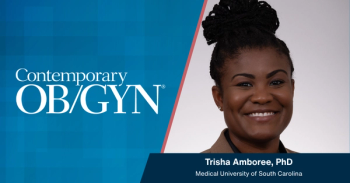
- Vol 66 No 7
- Volume 66
- Issue 07
US Women's Sexual Health and Reproductive Care Part II
A webinar held by the Kaiser Family Foundation (KFF) in April shared highlights from the 2020 Women’s Health Survey, followed by a panel discussion on its implications in several areas. This article captures the discussion portion of the webinar.
On April 21, 2021 KFF shared the findings from its
Conducted from November 19 through December 17, the KFF 2020 Women’s Health Survey represents a sample of 3,661 women ages 18-64 along with a companion survey for 1,144 men ages 18-64 for results comparison. Women between the ages of 18 and 49 made up almost 74% of respondents (2,695) and study authors said there was an oversample of uninsured, Asian, and women who identify as lesbian. The survey was conducted mostly online in English and Spanish, with a small number collected by phone. Researchers reported a margin of sampling error of +/-2% for the entire sample and higher in subgroups.
The purpose of the discussion panel was to put the survey’s findings into a policy context. Before KFF’s senior vice president and director of Women’s Health Policy Alina Salganicoff, PhD, moderated the survey findings discussion, she placed the survey’s findings into a broader context. She said that women’s sexual and reproductive health care and wellbeing has many factors that exist beyond the health care system. She cited the pandemic, poverty, inadequate housing, racism, violence, and unemployment. She highlighted the problem of structural racism in health care in particular, and in society as a whole. She said that these are “inextricably connected to sexual and reproductive health.”
Raegan McDonald-Mosley, MD, MPH, CEO and director of
Located in Austin, TX, Kami Geoffray, JD, CEO of
Monica McLemore, RN, MPH, PhD, is an associate professor of family health nursing at the University of California in San Francisco whose research specialization is reproductive justice. She is also an advocate and leader and blends knowledge from the nursing public health field and research in policy to better understand better reproductive health and the rights for people with the capacity for pregnancy. She went in a different direction for what stood out for her in the survey. McLemore first stressed that the lack of the prior federal administration’s action in the pandemic should be considered essential when looking at these findings. She also said that rather than either/or, telehealth visits and in-person visits should be considered together to help everyone get the services that work best. She also wanted the collective trauma from the pandemic to be addressed for providers and patients, and noted that mental health should be discussed in a global context and not just limited to sexual and reproductive health.
Located in St. Louis, MO, Sue Kendig, JD, MSN, WHNP, is the director of policy for the National Association of Nurse Practitioners in Women’s Health. She is a nurse practitioner and lawyer, and a national expert on patient safety and women’s health and serves on the advisory panel of
Title X Now Includes Equity
Many Title X providers may now return to the program due to new regulations issued by the Biden administration, some of which focus on equity, which Salganicoff said was new for Title X.Geoffray and McDonald-Mosley commented on how this will affect care and what is needed to strengthenfamily planning services, especially for underserved communities. Geoffray said care is challenging in Texas, and not all providers and grantees are doing more than the minimum because they are juggling other federal and state programs that often compete with one another, not because issues like equity are not a priority. She said the regulations were encouraging and would help providers share best practices at local, state, and nationwide levels and increase engagement in Title X and help serve communities at risk.
McDonald-Mosley praised the ruling that would reverse the gag rule, and then went on to say that the Title X program was decimated in 2019 with the loss of 1000 service sites for sexual and reproductive health; patients served went from 3 million to 1.5 million in 2020. In 6 states there are no Title X services, while in other states they were minimally available, she noted. “We have to acknowledge where we are and the level of funding that is needed to get back to where we need to be,” she said. “We have the opportunity to build back better.” She said that too many patients were receiving substandard or unaffordable care. She added that the new equity focus will help serve low-income clients, but this will mean changing the standards of the population of fair review process Title X Centers, she explained.
Helping Patients with Getting Their Choice of Contraception
McLemore and Kendig commented on the survey result that many women are not using their contraception of choice. McLemore stressed affordability issues of American health care, and said the American Rescue Plan may ease this issue but does not go far enough – an overhaul of cost needs to occur in American health care, she said, including increases in coverage for sexual and reproductive health. She then turned attention to the 20% of women who responded on the KFF survey that they are not using their choice of contraception because their provider recommended something else. “Providers inform people’s decisions, but it can’t be coercion. Best practices need to be infused across geographic areas…to reach the sweet spot between patient preference and clinician recommendation. Work needs to be done on the cost side and on the education of providers to have conversations with patients to give them what they really need in their life circumstances,” she said.
Kendig said the fracturing of sexual and reproductive health care into parts are harmful because it is all under the umbrella of women’s health and prevents looking at the whole person. Affordability and coverage affect areas like maternal mortality, and Kendig gave the example that Medicaid expansion states have better coverage for women than states that chose not to expand Medicaid, where 50% or more of women do not have access to critical care. “We need to look at how we cover women before and between pregnancy, not just during pregnancy as something to consider,” she said. She also agreed with McLemore about educating providers in a person-centered way to have a better outcome that matches what the patient wants for healthcare. She noted that in places like rural areas there is loss of hospital women’s health units, and therefore a loss of women’s health-focused providers, which reduces the quality of care for women in these areas.
Care outside of traditional clinical settings
Geoffray and McDonald-Mosley then discussed the implications of the increase in family planning clinics using telehealth, growth in contraception apps, and the lifting of the FDA requirement of in-person visits for the abortion pill. McDonald-Mosley said these have provided opportunities for a more person-centered experience. She emphasized that the scope of telemedicine service should extend beyond the pandemic to block obstacles to care such as transportation, childcare, and other issues. “Technology has the potential to be a game-changer,” she said, adding that it has been during the pandemic, but providers must be mindful of who has the potential to be left behind due to inequity and access. “Policies and practices can be driven by data,” she said, which is why the survey research from KFF is so important. She said 3 things are important to consider with the expansion of telemedicine: infrastructure and access to reliable internet, especially in rural and urban areas, and ensuring low-tech options such as phone and asynchronous options and that these are reimbursed by Medicaid and uninsured patients. She also said providers need to give patients care based on their preference and what fits medical needs, and not on what they will profit from the most. Finally, she said patients should have agency in how and where they want to receive care. She said that providers should challenge their preference to have patients physically come in for care, which is something that is not done often enough.
Geoffray said that Texas is one of 18 states that requires in-person visits for abortion care so the FDA lifting of the requirement does not apply to those women. She said beyond telehealth, some Title X providers in Texas used curbside delivery of contraception services and STI testing, and some were offered through the mail, or through a walk-up window. Many of the innovations were not supported by payers pre-pandemic and so advocacy will be needed to continue payment for this delivered care post-pandemic for reimbursement.
Counseling on HIV and STIs
A number of issues work against clinicians having conversations with patients about STIs, and were addressed by the discussion panel. McLemore recommended a peer-to-peer support situation as part of this process. “We need to innovate a tag team approach” that includes virtual and in-person counseling that is seen as a broader discussion. She also suggested simulation and training for clinicians to have these conversations with their patients so they can be comfortable with their discussions. The tools need to be integrated to have discussions on STIs, she said.
McDonald-Mosley said using data in provider trainings is important, and to examine biases with race and class that harm people. She said sometimes providers prioritize control of fertility over other general health needs. She also said policy needs to be in place to develop quality measures to make sure patients are satisfied with their choices and are comfortable with their care.
Promising Models in Technology and Innovation
Kendig suggested a model that she used while training nurse practitioners that are transferable to simulations. She previously partnered with a CDC-funded regional HIV/STD prevention center that developed a program for nurse practitioner students. In this program, specific course work and immersion experiences were used in STD clinics so students could learn how to ask and respond to patient questions while being nonjudgmental, which helped remove explicit and implicit bias, she explained. However, CDC decreased funding to the programs, she said, so the experience disappeared. She said funding would be an area of consideration for these programs to work. She also turned her attention to how providers interact with the community. “We need to really look at how clinicians can partner with communities so that they truly understand that community by walking in that community, not by being in their office and having people come in,” she said. Relationships need to be built with the community, and this all requires funding, she noted.
Finally, Geoffray said one more thing to consider is the use of health spaces. Patients may have difficulty getting access to private spaces while using telemedicine to have these personal conversations about sensitive health subjects while at home. “Confidentiality can’t happen in all these spaces when it comes to telemedicine,” she said. She added that sometimes in-person contact with a trusted provider is the best space, but the innovations of telehealth will be an important, ongoing way to deliver care for women’s sexual and reproductive health.
Reference
- Ranji U, Frederiksen B, Salganicoff A,et al. The Sexual and Reproductive Health Landscape in the US: Current Trends and the Impact of the Pandemic. Kaiser Family Foundation webinar. April 21, 2021. Accessed April 21, 2021.
Articles in this issue
over 4 years ago
Health care fraud exposedover 4 years ago
Steps to optimize maternal healthover 4 years ago
Questions linger around COVID-19's originover 4 years ago
Inside the July issue of Contemporary OB/GYN®over 4 years ago
Diagnosing and treating vulvo-perineal endometriosisover 4 years ago
Endometriosis Surgery: Long Term Follow-Up OutcomesNewsletter
Get the latest clinical updates, case studies, and expert commentary in obstetric and gynecologic care. Sign up now to stay informed.




















